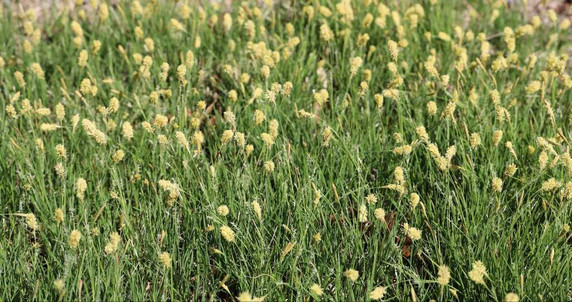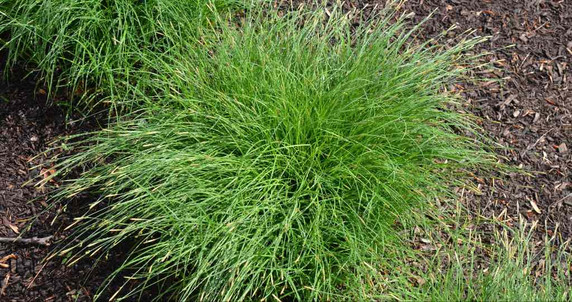Carex woodii - WOOD'S SEDGE
Very adaptable spreading sedge with universal use.
Top performer in Mt. Cuba Carex trials, gaining 4.7 points in shade and 4.4 in sunny location.
Tolerates light foot traffic and mowing.
In look reminds fine leaved Carex pennsylvanica.
Blooming Time: April/May
Size: 12" high x 24" and spreading to 46" wide clumps in 5 years, slowly spreading
USDA Zones: 4 to 8
Culture: very adaptable - full sun, half shade, full shade, average soil, clay, very adaptable to soil types, even alkaline soils.
Moisture Needs: average (medium), medium-moist, medium-dry
Origin: Midwest, Great Lakes region, also eastern coast, see the BONAP distribution map. Grows in mesic hardwood forests especially - deeply shaded north facing slopes, in rich calcareous woodlands, rich moist beech-maple forests, dry-mesic upland forests, montane mixed oak or oak-hickory forests, acidic cove forests and perimeters of hillside seeps.
Black walnut tolerance: yes
Deer/Rabbit Resistant: yes / yes
Attracts Butterflies or Pollinators: no
Attracts Hummingbirds: no
Pot Size: square 3.5" x 4" deep pot
Pictures copyright: Mt. Cuba
Plant combinations: Universal use sedge, matrix planting (use as the lowest function layer), bigger rock gardens, in masses or bigger groups, as a ground covering perennial, or substitute it in lawns in difficult spots. Goes well with majority of native and non-native perennials.

Carex woodii - WOOD'S SEDGE
Very adaptable spreading sedge with universal use.
Top performer in Mt. Cuba Carex trials, gaining 4.7 points in shade and 4.4 in sunny location.
Tolerates light foot traffic and mowing.
In look reminds fine leaved Carex pennsylvanica.
Blooming Time: April/May
Size: 12" high x 24" and spreading to 46" wide clumps in 5 years, slowly spreading
USDA Zones: 4 to 8
Culture: very adaptable - full sun, half shade, full shade, average soil, clay, very adaptable to soil types, even alkaline soils.
Moisture Needs: average (medium), medium-moist, medium-dry
Origin: Midwest, Great Lakes region, also eastern coast, see the BONAP distribution map. Grows in mesic hardwood forests especially - deeply shaded north facing slopes, in rich calcareous woodlands, rich moist beech-maple forests, dry-mesic upland forests, montane mixed oak or oak-hickory forests, acidic cove forests and perimeters of hillside seeps.
Black walnut tolerance: yes
Deer/Rabbit Resistant: yes / yes
Attracts Butterflies or Pollinators: no
Attracts Hummingbirds: no
Pot Size: square 3.5" x 4" deep pot
Pictures copyright: Mt. Cuba
Plant combinations: Universal use sedge, matrix planting (use as the lowest function layer), bigger rock gardens, in masses or bigger groups, as a ground covering perennial, or substitute it in lawns in difficult spots. Goes well with majority of native and non-native perennials.




